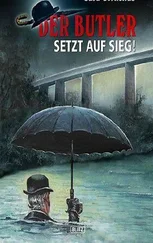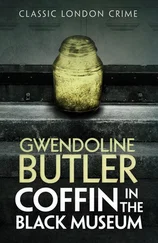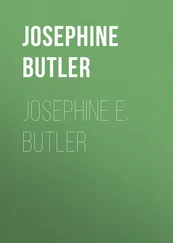Another manual goes so far as to define mathematical procedures for determining sleep efficiency (SE), constructing logo-speak over what should be, at its heart, the simplest thing of all:
Total sleep time (TST)
—————— x 100 = SE199
Total time in bed (TIB)
This SE coefficient is then to be used in maximizing efficiency by setting a “sleep window,” where there is a terminal period between the concrete time one wakes up (not to vary) and the time one goes to bed (to be shifted based on level of sleepiness at bedtime, which is also given mathematical terrain, a seven-point scale known as the Stanford Sleepiness Scale, where “1 = feeling alert; wide awake” and “7 = sleep onset soon; lost struggle to stay awake.” The very fact that this continuum ends in expectation — the perceived idea of “Here I go, I really am about to go under now” being, often, only one of many mirage doors in a long night’s hallway. In the meantime, further comfort can occur through consecrating and reinforcing the sleep environment as a place of rest (including removing outside light, as the presence of even tiny LCD glow such as from clocks and VCR faces have been shown to dramatically influence quality of sleep), as well as carefully monitoring the substances brought into the body, particularly stimulants, and volumes of liquid large enough to make you need to pee.
What we’re supposed to do, then, is spread all of this worry throughout the day, focusing on attending to these moments actively and in consideration of the night, so that by the time we hit the pillow we’re not only physically rolled upon, but we’ve spent enough brain light on the contraindicators that we might, in our backminds, actually be settled over the idea of interruption, distraction, fright. Do something relaxing and enjoyable before bedtimeappears in the same list as the worry scheduling, seeming both a fair suggestion and one worthy of an interminable angst— Like what? How should I relax? Look up sports scores? Eat a scone? This TV has nine hundred channels. Even my e-mail is making sales. Some nights I enjoy music, but tonight the headphones seem to be eating hard into my head. I can’t sit still. My arms feel like someone else’s. I keep thinking there is someone at the door, and the phone keeps ringing, and, and, and… Beyond the mental, masturbation might fill the purpose, teasing the body into a definitive release, and many nights surely that unlocking can kill a body’s stress, but it doesn’t always serve to kill the mind — in fact, the mind sometimes I’ve found in those post-spaces can come even more awakened, spun with the fantasy of flesh architecture or want for want — or on the opposite dimension, a more complete sense of desperation, a silence interrupted thereafter by having peeled away the basic need and awakened again obsessive thinking into now what . Any act that might work one night might not the next night, or might not come again, therefore creating only more frustration or compulsion or distinct confinement to be used to rail against itself. Often the clog just wants more clog.
Mention this ever-spooling solution list to most anybody and more than half have some little trick to pass along, something that might have worked for them or their grandmother among some long night. And often, too, these things, in some desperation, these things appear rising in the wash as wishes or mirage. Regardless of what doubt the long patterns have inscribed, any new thing might still be a potential key. Inevitably, and almost by default, they fall into place on the long list of Things I’ve Tried That Haven’t Worked. Part of the problem herein seems to have to do with resignation — a skepticism for the cure probably leading only that much more headstrong to an awakeness. At some point, even in your want and wish for x-ing out, you almost can’t help but strand yourself therein inside it and thus be cultishly committed to the idea that nothing short of hard-core overriding will make the sleeplessness desist. And so in some ways it becomes self-perpetuating, both consciously and unconsciously, as if it were a state in wanting, a terror badge. Still, no matter how deep this resignation may take hold of the unsleeper’s will, there’s likely no point at which, given a quick reliable out, you’d throw yourself into it whole on.
Stagnated or sealed out of the world of the public remedy, then, the next mode for many turns to more. Antidepressants are considered strong options for those with histories of depression, pain, or substance-abuse problems — the lack of sleep therein likely often a byproduct or shared terror floor. Among these medications, trazodone has been around since the 1960s, a second-generation antidepressant, and remains popular for its chemic lack of addictive properties, if still surrounded by endless potential inner destructions — drowsiness, fatigue, headaches, decreased sex drive, dizziness, as well as priapism in 1 in 6,000 men, 1 in 23,000 of whom will require surgery and suffer potential impotence for life. In addition, popular painkillers such as OxyContin. Darvon. Vicodin. Percocet. Percodan, Demerol. Lortab, Norco, Lorcet, though not prescribed in cases of pure sleeplessness, are often used for that end, sometimes, under the roof of self-medication, serving as a doorway unto death. The laundry list of effects and odds in deep relation with medication has for the most part become another feature in the stream of new info we as a community receive.
]
]
]
For years inside my own mess I’d gone on simply worming, resolved to remain floated in whatever unsleeping space my brain would bring. And yet, as household orders failed, and times stretched longer, the length of night began to grow, becoming just slightly more unbearable and hated in its new reach, night after night, night in night. In general I’d avoided doctors, appearing before them only when there were no other ways around, mainly out of some aversion to the small rooms and the white paper, the waiting behind doors for bodies who make their living negotiating, feeding, feeling, peering into other bodies. In the same way I’d let my wisdom teeth barrel in reckless, creating slow screw sound inside my mouth, which some nights would keep me up or wake me, the same way some people grind their molars through their night hours. This state, known as bruxism, is actually one of the most common forms of non-thought-sound-based insomnia, wherein people will grind their whites together so hard as to cause damage, ruin their smile. In addition to the usual symptoms that accompany sleep disorders, bruxism has been related to aggressive personalities and those with suppressed anger. Because it occurs during sleep, it can be difficult to detect bruxism, outside of waking symptoms such as chewed mouth tissue, teeth cracking, earaches, unusual wear on teeth or gums, headaches, jaw pain, and so on.
My mother gave me my first few Ambien from a prescription she’d gotten for occasional relief. She hesitated placing the small football-shaped powder-blue orbs in another orange container, also labeled with her name, and agreed only to let me have them if I’d hide the bottle in an inner pocket of my large coat. If the police were to catch me, she said, explain that they were hers, that I was bringing them to her, after a vacation. Something. I kissed my mother on the head — she who had gifted me with the brain of no sleep had gifted me again. I took the blue pills home. I carried the bottle near my heart. I felt excited, in the low lurch, to try this chemic door, this X-ing out. I did not know why it had not occurred to me before now to dig this yard up. Inside my bathroom, I shook a pill into my palm. I nudged it with my finger, saw my reflected face. It went down the way a pill does, a tiny bite of nothing. I don’t remember any flavor. I do remember moving there with the pill inside me to sit down on the bed in my bedroom, the thread of expectation snowing in me, waiting for inverted fireworks, some fall. I did not know if I expected some sense of caving, a slowing blackout, or some more immediate snuffing, like a blanket over light. I was nervous, like a waiting parent. I took my clothes off, did not pee. The room waited, with its light. I don’t remember the way the blank came, except that when it did, outside me, I was gone. The doors opened and I went through them, and there I hid. There was no roll. No silent chorus of selves in nothing, saying the same sounds again, again. That night, at least, I fell in.
Читать дальше












